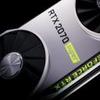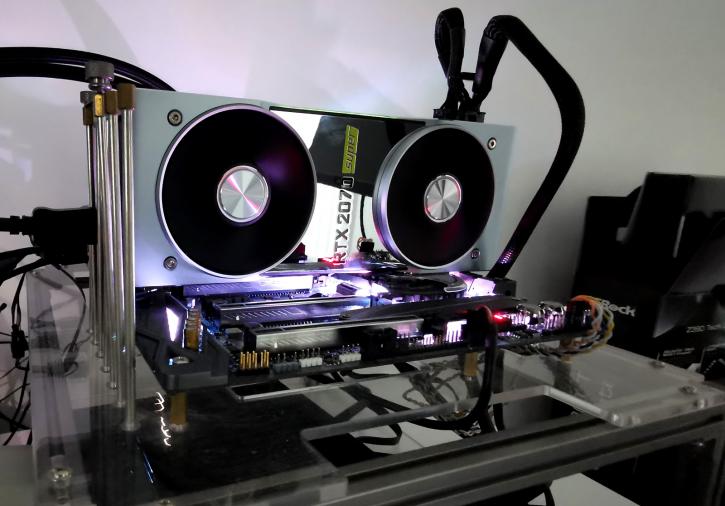Conclusion
Final words and verdict
It will be interesting to see how the new Super series will get received by the PC gaming community. Regardless of the price level, NVIDIA does bump up one card really significantly. The more popular of the two cards released today would be that RTX 2060 Super. It's now at 8 GB of graphics memory that is faster. The added 2Gb has increased the memory bus to 256-bits wide as well. ROPs are tied to that, so that number increases to 64. And then another 256 shader processors bumped to 2176, combined with the new clock frequencies, will make sure that the end result seen from the regular 2060 is a significant performance boost. The GeForce RTX 2070 Super, on its end, sees a nice increase in perf as well, maybe 10% here and there thanks to the added 256 shader processors resulting in 2560 of them for which NVIDIA needed the TU104. Here, however, the memory stays at 8GB and thus the ROP count remains the same as well as many other variables. However, the new clock frequencies do give it an advantage over, say, even a GTX 1080 Ti and closer to the RTX 2080, which is an interesting performance level.
All my comments are of course based on the shader engine performance. You obviously pay more for the RT and Tensor cores. Currently, I look at the RTX as a proper shading card series with the extra being Raytracing and, if you like it, DLSS. But yeah, these are expensive co-processors alright. It's the nag of pioneering, 10 years from now all graphics card will have stuff like this, hardware accelerated, as standard. I don't think anyone doubts how cool RT and Tensor functionality is, it's just the price premium that is kicking NVIDIA in the proverbial nutsack.
So where do we position these cards performance wise? Well, that depends on what kind of game you like to play, the quality settings and, of course, resolution. When we look at pure shading performance, the GeForce RTX 2060 Super series will sit best in an up-to Quad HD resolution monitor range. And yes, that latter one is what I consider to be the new mainstream these days. At 1920x1080 and 2560x1440 or something close you'll see very, very proper game performance; it, however, might not be a card suitable in the Ultra HD range. That, though, is something you will reach with the RTX 2070 Super.
Raytracing
At Full HD the RT and Tensor cores will be sufficient enough, at WQHD that will become more challenging for both cards. It is a matter of time though. A good example was Battlefield V wherein the initial stages RT performance was horrendous. DICE raytraced all objects in the entire scene; smart variable raytracing where you only put the RT cores to work on what you can see, really helps in perf. More and more games will support this methodology and over time the performance benefit will increase. For now, it remains a tricky subject though. How the new technology and the actual engine will behave (is it powerful enough?) is something only the future will tell, it is your call to be an early adopter (or not).
Aesthetics
RTX Founders edition cards are very nice looking cards, aside from the new Super logo nothing has changed. We like this metal and black design. The cards have a very nice looking backplate, however, it is one that will trap heat. The dual fan design makes total sense, and I wish some other companies would follow that trend. Taste differs, of course, luckily there are a dozen AIB partners that will have multiple designs available as well.
Cooling & Noise Levels
Both cards top out at roughly that 65 Degrees C range while gaming. So that's not bad at all, especially considering the acoustics. The cooler design works well, the cards remain at very acceptable acoustic levels. Only proper board partner cards will offer better results. We've heard no noticeable coil whine. But I do want to note that any graphics card at a high-enough FPS will make some coil-whine.
Overclocking
Anything and everything is regulated by NVIDIA these days. Speaking, in general, you can expect another 10% of extra perf out of both cards when you bump up the graphics memory and GPU a bit. That it is, however, paired with an increased board power limiter and, as such, that will cost a bit more energy. Both traditional overclocking, as well as the OC Scanner functions, bring us close to that value. In retrospect though, you have to remember, that the 'older' RTX models could also be tweaked to 15~16 Gbps on that GDDR6 memory.
Concluding
NVIDIA's timing of this, the release of the RTX 2060 and 2070 Super has, of course, everything to do with the competition's pending Radeon RX 5600 and 5700 XT release. Make no mistake, that is no coincidence. But hey, that is how this business works. NVIDIA's advantages over the competition are the added RT and Tensor cores, and presumably a performance benefit as that RTX 2060 Super now has become a much stronger card. NVIDIA's disadvantages are those same RT and Tensor cores, as they make it a more expensive GPU to fab and, as such, their products are more expensive. It is a complex cat and mouse game between the two companies. Regardless of all that, it's competition and competition, in the end, will drive forwards technology to a higher level, and often prices towards a lower level. Where would the GPU industry be without AMD or NVIDIA. Back to the products though. I have to admit that I like the new RTX 2060 Super as it has become a more powerful card. The RTX 2070 Super is great as well, but it's again in that price range that people do not want to pay. DX-R Raytracing wise, what the industry needs is better game support and the simple fact that the price level is out of reach for most people. We do think that the GeForce RTX 2060 Super is what the market needs. It is plenty fast for any gaming up-to, say, the Quad HD monitor resolution of 2560x1440. The added benefit is a handful of Tensor cores and the ability to put the RT cores to use. This way, at a relatively safe amount of money (399 USD), you get that very nice shader performance. Look at RT as an extra, try & see what the RayTracing is all about. The GPU that resides inside the RTX 2060 Super is really the RTX 2070 Super GPU that has been cut down a notch. The new 8GB of graphics memory is great as that also widens the memory bus. Looking at it from a competition point of view, the card positions itself against the Vega 64 card and presumably soon the Radeon RX 5700. This is the new GeForce RTX line-up:
- GeForce RTX 2080 Ti lives on as is.
- GeForce RTX 2080 SUPER slots in at $699 and offers more performance than the RTX 2080 at the same price. Memory speed has been cranked up to 15.5Gbps. It’s faster than Titan XP.
- GeForce RTX 2070 SUPER is 16% faster than the GeForce RTX 2070 for the same price. It beats a GeForce GTX 1080 Ti.
- GeForce RTX 2060 SUPER is up to 15% faster than RTX 2060, and it has 8GB of memory instead of 6GB. It’s faster than GTX 1080, and it nearly matches RTX 2070 performance, for $399.
- GeForce RTX 2060 lives on as the first step up to RTX performance and feature set, for $349.
We cannot complain about the GeForce RTX 2060 Super, it has received a proper upgrade. Priced right it could be a hit, really. Also, qualifying purchases of a GeForce RTX 2060 SUPER, GeForce RTX 2070 SUPER, or the upcoming GeForce RTX 2080 SUPER for desktop PC will include a copy of two award-winning games that support real-time ray tracing, Control and Wolfenstein: Youngblood. An added value of $90. The GeForce RTX 2070 Super is a bit more of what I consider that traditional refresh but it also shows very strong shader performance at 499 USD. We can recommend both, the RTX 2060 Super, however, (if priced right) could become NVDIA's new Superstar if the retail price will remain at just the right sweet spot. The 2060S and 2070S will be available for purchase starting next week, July 9th.
Recommended Downloads
- Sign up to receive a notification when we publish a new article
- Or go back to Guru3D's front page



